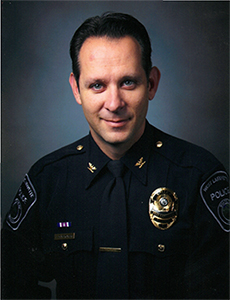High-profile cases in Ferguson, Missouri, and New York City this fall have provided lots of press coverage on the topic of police body cameras.
 The West Lafayette Police Department implemented the use of body cameras for its officers in September 2014. Chief Jason Dombkowski had started researching the technology a year earlier as part of his master’s degree program at Purdue University.
The West Lafayette Police Department implemented the use of body cameras for its officers in September 2014. Chief Jason Dombkowski had started researching the technology a year earlier as part of his master’s degree program at Purdue University.
“We think we were cutting edge in obtaining the technology, researching it, doing so at a university level, and implementing it into a university town in a relatively short period of time,” Dombkowski said. West Lafayette’s implementation came just a few months after the International Association of Chiefs of Police created a model policy for body cameras and a few weeks after the Police Executive Research Forum released a large report on the practice. West Lafayette and Bloomington, home of Indiana University, are the first two Indiana cities to fully implement body cameras for police.
Dombkowski began researching the technology during his research methods class, part of the coursework for his weekend master’s degree program in leadership. He earned his degree from the Department of Technology Leadership and Innovation in May 2014 through Purdue’s Center for Professional Studies in Technology and Applied Research (ProSTAR).
“When I completed my research project, the topic of body-worn cameras was really at the forefront of law enforcement technology,” Dombkowski said. “This was the main technology being talked about at conferences. There are a lot of other issues tied to it: technology, data storage, privacy rights and officer discretion issues.”
Dombkowski’s research included interviews with vendors and field research with his officers. They tested different products while on the job, and they researched policies related to privacy rights, the capabilities and legalities of storing and retaining data, and implementation.
He also had to make a final presentation of his research to his classmates. He said their questions and feedback provided valuable direction as well. The cohort aspect of his master’s program – a group of students who go through the 22-month program at the same time and pace – was beneficial, Dombkowski said.
“It is a real asset to the program, because it brings in ideas and experiences from all over the workplace,” he said. “People learn nearly as much from each other as they do from anything else in the program.”
The graduate degrees from Purdue’s College of Technology that are administered through ProSTAR provide similar experiences to all students, according to Mark Schuver, director.
“The whole premise is that we are helping students identify some improvement opportunity, typically one that is relevant to them and their employer,” he said. “They then follow a disciplined approach to research it, evaluate it, and recommend a solution.”
